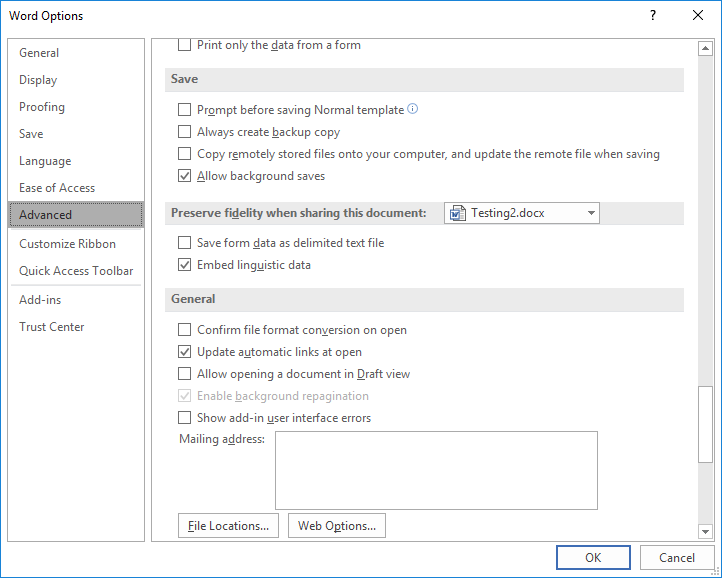Please Note: This article is written for users of the following Microsoft Word versions: 2007, 2010, 2013, 2016, 2019, and 2021. If you are using an earlier version (Word 2003 or earlier), this tip may not work for you. For a version of this tip written specifically for earlier versions of Word, click here: Automatically Saving Changes to Defaults.
Written by Allen Wyatt (last updated November 27, 2021)
This tip applies to Word 2007, 2010, 2013, 2016, 2019, and 2021
Many of Word's configuration settings are stored in the Normal template. This template is used to help create new, blank documents and to define some of the system-wide settings used by Word. As you make changes to these settings, Word marks the Normal template as "dirty" so that it will be saved when you exit the program.
By default, Word saves the Normal template without any notification to you. However, you may want notification. Why? In case there were some changes done without your explicit action—for instance, by running a macro. If you want Word to notify you when it is about to save the Normal template, follow these steps:

Figure 1. The Advanced options in the Word Options dialog box.
WordTips is your source for cost-effective Microsoft Word training. (Microsoft Word is the most popular word processing software in the world.) This tip (8437) applies to Microsoft Word 2007, 2010, 2013, 2016, 2019, and 2021. You can find a version of this tip for the older menu interface of Word here: Automatically Saving Changes to Defaults.

Create Custom Apps with VBA! Discover how to extend the capabilities of Office 365 applications with VBA programming. Written in clear terms and understandable language, the book includes systematic tutorials and contains both intermediate and advanced content for experienced VB developers. Designed to be comprehensive, the book addresses not just one Office application, but the entire Office suite. Check out Mastering VBA for Microsoft Office 365 today!
There are scores of keyboard shortcuts built into both Windows and Word. If you run into a conflict between shortcut ...
Discover MoreWhen you first start Word, it displays the Home tab of the ribbon. If you want to display a different ribbon tab by ...
Discover MoreThe style area, displayed at the left side of your document, can be helpful in understanding how styles are used in your ...
Discover MoreFREE SERVICE: Get tips like this every week in WordTips, a free productivity newsletter. Enter your address and click "Subscribe."
There are currently no comments for this tip. (Be the first to leave your comment—just use the simple form above!)
Got a version of Word that uses the ribbon interface (Word 2007 or later)? This site is for you! If you use an earlier version of Word, visit our WordTips site focusing on the menu interface.
Visit the WordTips channel on YouTube
FREE SERVICE: Get tips like this every week in WordTips, a free productivity newsletter. Enter your address and click "Subscribe."
Copyright © 2026 Sharon Parq Associates, Inc.
Comments